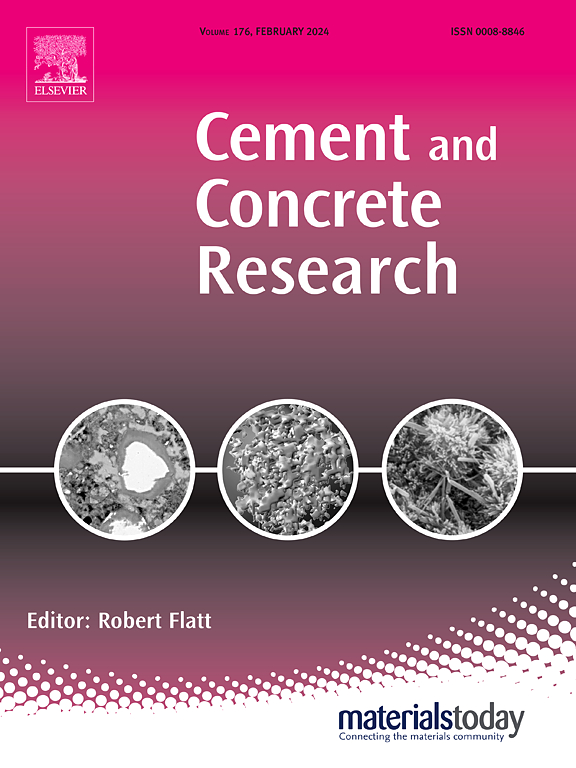Carbonation behavior of Portland cement incorporating polycarboxylate ether superplasticizer: Towards carbonation kinetics, microstructural evolution and mechanical properties
IF 13.1
1区 工程技术
Q1 CONSTRUCTION & BUILDING TECHNOLOGY
引用次数: 0
Abstract
Polycarboxylate ether (PCE) superplasticizers are crucial in modern concrete, yet their compatibility with carbonation curing, a promising CO2 sequestration method, remains insufficiently understood. This study systematically examined carbonation behavior of Portland cement (PC) incorporating PCE by analyzing its phase assemblage, microstructure, carbonation heat, solution chemistry and mechanical properties. Results indicated that PCE significantly reduced the carbonation rate. The peak rate of carbonation heat in pure PC reached 0.57 W/g, while the addition of 2.0 % PCE reduced this value by 43.9 %. This reduction was attributed to the adsorption and complexation effects of PCE, the immobilization of CaCO3 clusters within polymer network, as well as a rapid decrease in solution pH. Furthermore, the aggressive carbonation kinetics amplified the detrimental impact of PCE on microstructural development. This inhibited carbonation at particle boundaries and weakened interparticle bonding, thereby leading to a decline in mechanical performance. These findings offer fundamental insights into the compatibility and limitations of using PCE in combination with carbonation technologies in concrete.掺聚羧酸醚减水剂硅酸盐水泥的碳化行为:碳化动力学、微观结构演变和力学性能研究
聚羧酸醚(PCE)高效减水剂在现代混凝土中至关重要,但它们与碳化固化(一种很有前途的二氧化碳封存方法)的相容性仍未得到充分了解。本研究通过分析PCE硅酸盐水泥的相组合、微观结构、碳化热、溶液化学和力学性能,系统地考察了PCE硅酸盐水泥的碳化行为。结果表明,PCE显著降低了碳酸化速率。纯PC的碳化热峰值为0.57 W/g,而添加2.0%的PCE使碳化热峰值降低了43.9%。这种减少归因于PCE的吸附和络合作用、CaCO3簇在聚合物网络中的固定化以及溶液ph的快速降低。此外,积极的碳化动力学放大了PCE对微观结构发育的有害影响。这抑制了颗粒边界的碳化,削弱了颗粒间的结合,从而导致机械性能下降。这些发现为PCE与混凝土碳化技术结合使用的兼容性和局限性提供了基本的见解。
本文章由计算机程序翻译,如有差异,请以英文原文为准。
求助全文
约1分钟内获得全文
求助全文
来源期刊

Cement and Concrete Research
工程技术-材料科学:综合
CiteScore
20.90
自引率
12.30%
发文量
318
审稿时长
53 days
期刊介绍:
Cement and Concrete Research is dedicated to publishing top-notch research on the materials science and engineering of cement, cement composites, mortars, concrete, and related materials incorporating cement or other mineral binders. The journal prioritizes reporting significant findings in research on the properties and performance of cementitious materials. It also covers novel experimental techniques, the latest analytical and modeling methods, examination and diagnosis of actual cement and concrete structures, and the exploration of potential improvements in materials.
 求助内容:
求助内容: 应助结果提醒方式:
应助结果提醒方式:


